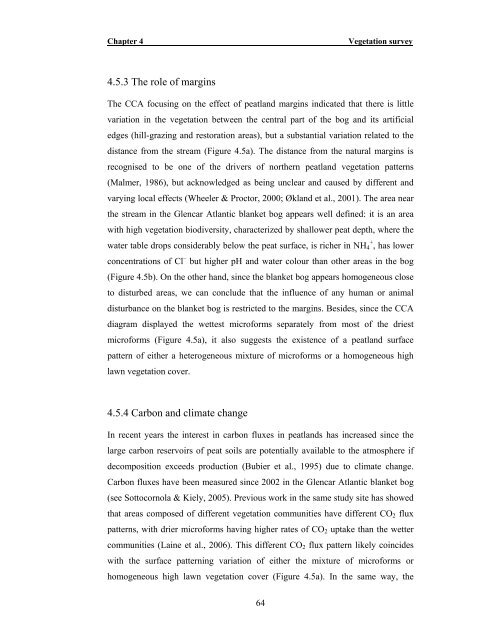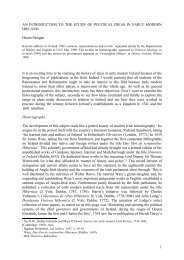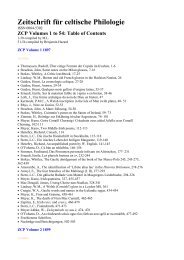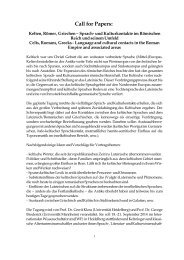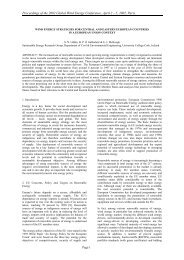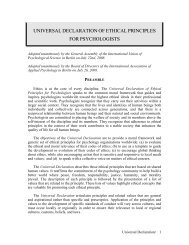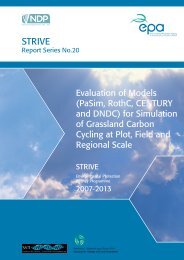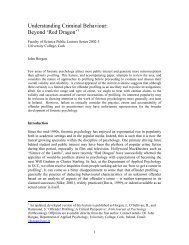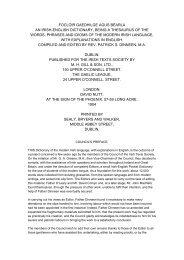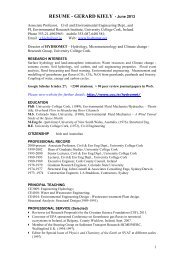PhD Thesis, 2007 - University College Cork
PhD Thesis, 2007 - University College Cork
PhD Thesis, 2007 - University College Cork
Create successful ePaper yourself
Turn your PDF publications into a flip-book with our unique Google optimized e-Paper software.
Chapter 4<br />
Vegetation survey<br />
4.5.3 The role of margins<br />
The CCA focusing on the effect of peatland margins indicated that there is little<br />
variation in the vegetation between the central part of the bog and its artificial<br />
edges (hill-grazing and restoration areas), but a substantial variation related to the<br />
distance from the stream (Figure 4.5a). The distance from the natural margins is<br />
recognised to be one of the drivers of northern peatland vegetation patterns<br />
(Malmer, 1986), but acknowledged as being unclear and caused by different and<br />
varying local effects (Wheeler & Proctor, 2000; Økland et al., 2001). The area near<br />
the stream in the Glencar Atlantic blanket bog appears well defined: it is an area<br />
with high vegetation biodiversity, characterized by shallower peat depth, where the<br />
water table drops considerably below the peat surface, is richer in NH + 4 , has lower<br />
concentrations of Cl – but higher pH and water colour than other areas in the bog<br />
(Figure 4.5b). On the other hand, since the blanket bog appears homogeneous close<br />
to disturbed areas, we can conclude that the influence of any human or animal<br />
disturbance on the blanket bog is restricted to the margins. Besides, since the CCA<br />
diagram displayed the wettest microforms separately from most of the driest<br />
microforms (Figure 4.5a), it also suggests the existence of a peatland surface<br />
pattern of either a heterogeneous mixture of microforms or a homogeneous high<br />
lawn vegetation cover.<br />
4.5.4 Carbon and climate change<br />
In recent years the interest in carbon fluxes in peatlands has increased since the<br />
large carbon reservoirs of peat soils are potentially available to the atmosphere if<br />
decomposition exceeds production (Bubier et al., 1995) due to climate change.<br />
Carbon fluxes have been measured since 2002 in the Glencar Atlantic blanket bog<br />
(see Sottocornola & Kiely, 2005). Previous work in the same study site has showed<br />
that areas composed of different vegetation communities have different CO 2 flux<br />
patterns, with drier microforms having higher rates of CO 2 uptake than the wetter<br />
communities (Laine et al., 2006). This different CO 2 flux pattern likely coincides<br />
with the surface patterning variation of either the mixture of microforms or<br />
homogeneous high lawn vegetation cover (Figure 4.5a). In the same way, the<br />
64


